Travis Haley, of Haley Strategic, shoots a modified VTAC 1-5 Drill and explains why we use drills like these in our AR-15 training.
VIDEO: AR-15 Viking Tactics 1-5 Shooting Drill
5 Things You Must Know About Concealed Carry Holsters
You've got your CCW handgun, but before you start packing here are five things about concealed carry holsters you need to be aware of before you go armed.
1) Concealed Carry Holsters: Plan on Them Not Feeling Right…Yet

but also note the reinforced belt loops and
double stitching. It is made to last and withstand
the many repetitions needed to achieve real speed
and smoothness in practice.
Some effort is required to find the right concealed carry holster, but no matter what the choice, there is always an acclimation period.
Some handguns are more ergonomic than others, but few are completely devoid of sharp edges.
2) Don’t Spend All Your Money but Don’t Buy Junk
A quality concealed carry holster goes a long way toward making carrying a defensive handgun bearable. There are many choices, and some are readily available. Blackhawk, DeSantis, and Galco are among the best-known and most reliable mass-produced holsters.
There are fine concealed carry holsters that are custom made and that might be said to be examples of the maker’s art. These are not inexpensive and often take weeks, if not months, to obtain.
Still, while the concepts of inexpensive and high quality don’t always go together, there are good holsters offering a balance of value and cost.
3) Kydex is as Good as Leather
Leather is attractive, but these days, Kydex, a thermoplastic resin, is a more popular concealed carry holster material. (Do not confuse Kydex with ordinary cheap plastic, which isn’t durable enough for the rigors of concealed carry.)
There are tradeoffs inherent in Kydex, but there are also advantages. One of the biggest pluses is that the material is maintenance-free and impervious to solvents or moisture.
A tradeoff, if it can be called one, is that a leather holster maintains security on the long bearing surfaces of the pistol, while the Kydex holster keeps its grip primarily on the muzzle and trigger guard area. Of the downsides? Some say Kydex will wear the finish off a pistol quickly, but so does properly fitted leather.
4) Pick a Manageable, Accurate Caliber
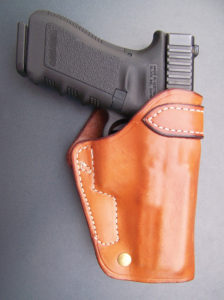
My choice in defensive handguns is based on many years of practical experience. Having been in the wrong place at the wrong time more than once, and having written quite a few reports concerning shootings and other mayhem, I am aware of the relative wound potential of different handguns.
I prefer the .45 ACP and the .357 Magnum. The .38 Special and 9mm+P are also realistic minimum calibers. I’ll always lean towards one that is manageable and accurate.
5) Examine Your Wardrobe
Concealing a serious defensive handgun under lightweight garments can be problematic. If the handgun is short and compact, an outside-the-waistband (OWB) holster under a sport shirt will work fine, but, for most of us, the inside-the-waistband holster (IWB) is superior.
Your covering garment is important. I have adopted a Kakadu sport shirt for much of my concealment needs. This shirt is made of Gravel canvas and has a leather collar. I admit it is stylish, but it also conceals a holster well without printing the outline of it for the world to see.
Must-Read Articles on Concealed Carry Holsters
- Concealed Carry Holsters for Women
- Best Concealed Carry Holster
- Best Pocket Holster – Options For Easy Everyday Carry
- Concealed Carry Shoulder Holsters – Best Up-Top Carry Options
- AIWB vs IWB Holster – Pros & Cons
- Concealed Carry Fanny Pack
Editor’s Note: This article on concealed carry holsters is excerpted from Gun Digest 2014, the world’s foremost annual book about firearms.
Is High-Velocity Ammunition Worth It for Handguns?
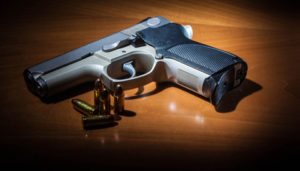 Is high-velocity ammunition for your handgun worth the extra cost? – John Q., Living Ready reader
Is high-velocity ammunition for your handgun worth the extra cost? – John Q., Living Ready reader
High-Velocity Ammunition Answer
Good question, John. My opinion is, for the average shooter, probably not.
Handgun ammo comes in many different loadings within caliber. High-velocity ammunition varieties (often referred to as “+P”) come with higher combustion pressures and more sophisticated bullet designs.
Advanced projectiles upset more (increase their frontal area) to create a larger wound channel, and higher pressures produce more energy transfer into the human body. The desired result is faster incapacitation, and if you know you can handle it, this is a good thing. For experienced shooters the extra cost is well worth it.
What’s the Problem with High-Velocity Ammunition?
The problem is higher pressures bring more recoil and muzzle flash. In some loadings, this means a lot more recoil and flash. This is especially significant when the gun must be fired at night.
High-velocity handgun rounds can create a muzzle flash or “bloom” (especially in today’s shorty handguns) so distracting that it can take you out of the fight tactically by destroying your night vision.
With a lot of practice, you can learn to tolerate the recoil and using a tactical light properly can reduce the flash effects. In my experience, most civilians and many cops don’t practice enough to overcome either side effect of the high velocity loadings. The increase in stopping power may then be offset by poor shot placement. And if you have not fired your “duty round” in the dark, you really have no idea what you are carrying.
Standard Velocity Ammunition May Offer Better Results
 I teach my rookies that the most significant factor in surviving a gunfight is the ability to put an aimed round of adequate ballistics in the center mass of the adversary before they get one into you. That doesn’t mean that you rush the shot. It means that you quickly decide you need to shoot and smoothly present the gun, acquire the front sight and press the trigger.
I teach my rookies that the most significant factor in surviving a gunfight is the ability to put an aimed round of adequate ballistics in the center mass of the adversary before they get one into you. That doesn’t mean that you rush the shot. It means that you quickly decide you need to shoot and smoothly present the gun, acquire the front sight and press the trigger.
Plus P ammunition has no positive bearing on that dynamic, and in fact, may retard it. If you fear the recoil or flash of the weapon, you will likely not be smooth and decisive when it counts. A solid torso hit with a standard velocity hollow point is better than a miss with your super-zipper-zombie-zapper any day.
Ammo choices have also been complicated by the shortages caused by the recent panic buying situation. Most folks don’t store a lot of ammo and you may find that your usual loading has vanished from the shelves. If that happens, I recommend a lower velocity loading than a higher one as an alternative unless you can get quickly to the range and try out the new stuff.
I don’t want anybody to feel under-gunned with standard velocity loads. Shot placement trumps bullet energy, and there is no such thing as a guaranteed fight stopper pistol bullet. (Remember, a handgun is what you take if you don’t think you are going to get into a gunfight.)
So in a gun store with staff you trust, ask them to recommend a standard velocity, hollow point load and practice with it. If you practice regularly with the ammunition you use for personal defense you should be just fine. When in doubt, go with standard velocity.
(Note: If you are really interested in how bullets do their job and what actual autopsy data suggests are the best loads for your gun, get the definitive work in the field, Handgun Stopping Power, by Marshall and Sanow. It is very readable and I recommend it highly.)
And remember, please, every person has unique needs and capacities and every armed encounter is different. When developing your defensive tactics always get a second opinion.
VIDEO: Desert Eagle .50 Cal World Record
Watch Jerry Miculek make five shots in 0.8 Seconds with the Desert Eagle .50, a new World Record. Recorded in super high speed you can actually see the bullets screaming out of this awesome handgun!
Recommended Handgun Shooting Resources
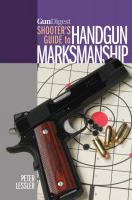 Editor's Note: Be sure check out the new Gun Digest Shooter's Guide to Handgun Marksmanship.
Editor's Note: Be sure check out the new Gun Digest Shooter's Guide to Handgun Marksmanship.
Video: Sneak Peek at the Glock 41 and 42
When it comes to generating chatter in the gun community, few things can get jaws jacking like Glock. The Austrian-based manufacturer has a large fan base, always champing at the bit over what the company plans to introduce next. And perhaps as of late, no two handguns have produced more chatter than the new Glock 41 and 42.
Glock 41
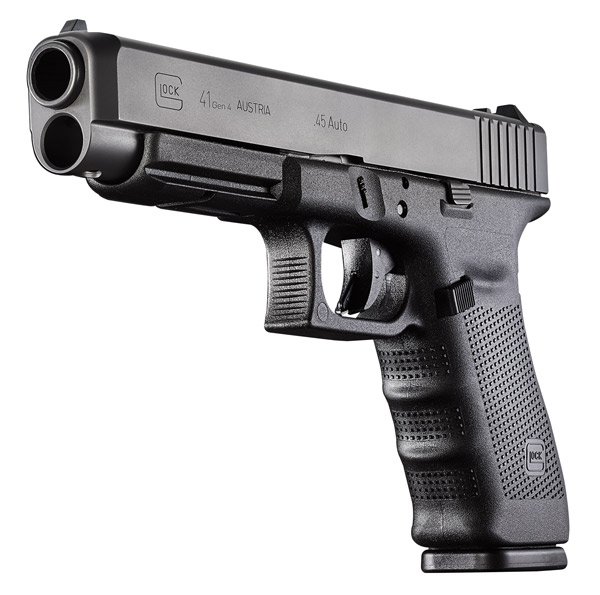
The Glock 41 is the company’s answer to those who have wanted its take on a longslide .45 ACP. As Massad Ayoob points out in the video below, the Glock 41 is an amalgamation of features of the company’s other pistols. It has the similar frame to the Gen 4 Glock 21, with the slimmer slide of the practical/tactical Glock 34 and 35.
Glock 41 Specifications
Overall length: 8.9 inches
Width: 1.28 inches
Height (with magazine): 5.47 inches
Barrel length: 5.31 inches
Length of twist: 1:15.75 inches
Pistol weight without magazine: 24 ounces
Magazine weight full: 12 ounces
Standard trigger pull: 5.62 pounds
Magazine capacity: 13 rounds
Glock 42

Glock fans have been after the company to produce a pocket-sized pistol for years. What the manufacturer has come up with, however, has already stirred the pot. Many expected the Glock 42 to be a single stack 9mm, instead the company chambered the pistol in .380 ACP.
According to Massad Ayoob in the video below, the reason why Glock went with .380 for the 42 was shootablity. The .380 gives the shooter more control and offers less recoil than a 9mm of the same size. As Ayoob points out, these are assets for someone with small or arthritic hands.
The Glock 42 is the smallest pistol the company has ever produced. Despite its petite size compared to its cousins, it is rather bulky in relation to other .380 ACPs. The Ruger LCP and Kahr P380, to name two, are much more diminutive in comparison. There is speculation the .380 will be a stepping stone in offering the Glock 42 in 9mm. But at this point that is little more than conjecture.
On a side note, this is not the first .380 Glock has produced. The Glock 25 and 28 are both chambered .380, but have only been available to law enforcement agencies.
Glock 42 Specifications
Overall length: 5.94 inches
Width: 0.94-inch
Height (with magazine): 4.13 inches
Barrel length: 3.25 inches
Length of twist: 1:9.84 inches
Pistol weight without magazine: 12.35 ounces
Magazine weight full: 2.01 ounces
Standard trigger pull: 5.62 pounds
Magazine Capacity: 6+1
Recommended Glock Resource
Deep Freeze: Video of .30-06 vs. Hot Water Jug at -27° F in Wisconsin
What happens when the temperature dives to a frigid -27°F with windchills exceeding -55°F and you blast 1-gallon jugs of boiling water with a rifle? Answer: a massive cloud of water vapor which instantly freezes, turning into a cloud of snow.
Get the Gun Digest Annual Book
 Click Here to get your copy of the Gun Digest 2014
Click Here to get your copy of the Gun Digest 2014
Testfire: Ruger SR40 Review
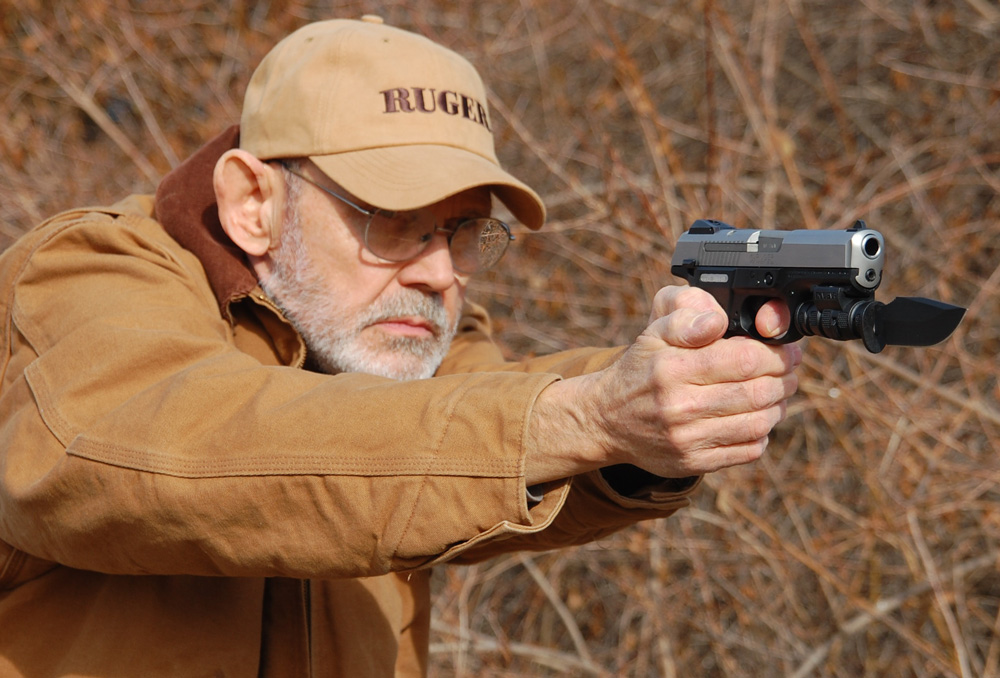
The Ruger SR40 is a striker-fired handgun that offers a host of unique features, exceptional reliability, great ergonomics, and excellent accuracy. It is also modestly priced, with an MSRP of only $525.
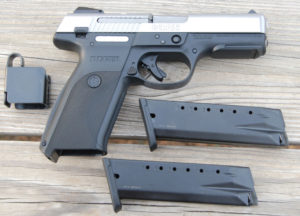
Recently, the SR40 and SR40c were introduced in the super-popular .40 Smith & Wesson cartridge. This makes a lot of sense, since many justifiably think any defensive caliber ought to begin with a “4.”
Both frame sizes have their place, depending on the intended use. The compact models shave about .64-inch off the barrel and 3.1 ounces off the weight of the standard models. This is not to say the standard models are big. They’re not, but they are a bit larger than the compacts. All four versions have a coordinated set of synergetic features that produce a comfortable, efficient, and reliable shooting system.
Find Out More About Ruger Firearms
The Ruger SR40 is striker-fired and offers a host of unique features, exceptional reliability, great ergonomics, and excellent accuracy. (I might mention that it is also modestly priced, with an MSRP of only $525.)
It features a glass-filled nylon grip frame. The pistol fits my hand like a glove, and—praise be—its angle is exactly the same as a 1911, important to those of us trained on the old .45. When I raise the SR40 to shooting position, the sights are pointed right at the target.
The trigger has a trigger safety lever that prevents firing unless the trigger is completely pulled. An ambidextrous manual safety is also provided at the rear of the slide, which not only prevents firing, but also locks the slide.
Its use is not required because, like most other DAO pistols, the gun is completely safe until the shooter picks it up and pulls the trigger. A flat loaded-chamber indicator, another safety feature, is on the top of the slide at the rear of the ejection port and sticks up when a round is loaded in the chamber.
The trigger pull on my test-fire sample was seven pounds, one ounce. It was a bit gritty at first, but, after a few break-in rounds, it smoothed right up. To me, it felt like a highly tuned revolver—just as a DAO pistol is supposed to—first shot to last. Additionally, the SR40 uses a unique link-less system to lock and unlock the barrel that differs from those pistols in the Ruger P-series. Movement of the slide fore and aft is slick and quick.
Combined with a grip frame that is extremely strong, lightweight, and very pleasing to the hand, felt recoil seems moderated. I also liked that the molded-in checkering on the grips, backstrap, and front of the grip, which provide a good handhold without sandpapering off your skin when firing.
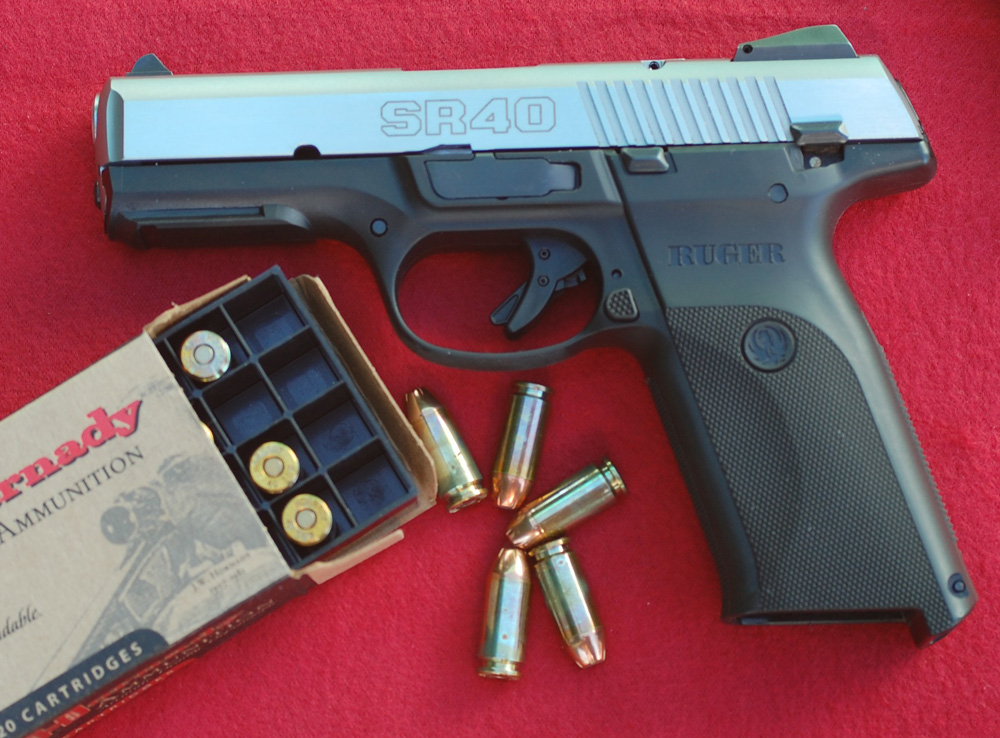
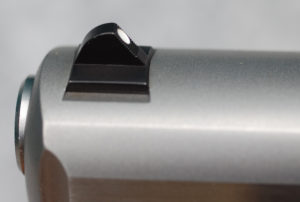
The trim little pistol weighs a mere 27.2 ounces with an empty magazine. Loaded with 15 rounds, it tips the scales at 36.4 ounces. The 4.1-inch barrel has six grooves with a 1:16 right-hand twist. Slides are made of either alloy or stainless steel, depending on finish. My test gun had the stainless slide, and I can report that it had a lustrous and uniformly brushed finish that is very attractive. A black nitride version is also available.
Another nice feature is the reversible backstrap. The pistol comes with the arched side out, but, if you prefer a flat backstrap (as you’d find with the original M-1911), just push out a little pin, turn the backstrap over, and reinstall. It takes all of about 30 seconds, if you go really slow.
The magazine release is ambidextrous. Thankfully, when it is pressed from either side, the magazine is instantly launched out of the grip like it’s jet propelled. Insertion of a magazine is slick and effortless.
The gun, by the way, is shipped in a hard plastic case with two 15-round magazines.
The SR40 has a magazine disconnect system that prevents firing if the magazine is removed. The gun will “snap” with the magazine removed, but it won’t fire with a live round in the chamber.
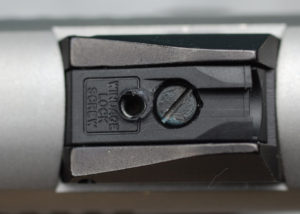
Also, the trigger pull is not the same with the magazine removed as when firing a loaded gun. Importantly, the owner’s manual specifically cautions that dry-firing a SR series pistol without a magazine “may result in damage or unnecessary wear to the magazine disconnect mechanism and/or striker,” and may get you exiled to the Gulag. In other words, don’t do it. The SR40 can be dry-fired without damage to the pistol, when an empty magazine is in place.
An accessory rail is provided at the bottom front of the grip frame, to which the user can hang all manner of accoutrements like a laser sight, high-intensity light, or a pistol bayonet. Up top, it seems to be an article of faith that all defensive pistols have fixed sights, never mind that they don’t always hit where they look and you can’t change them, but guess what? The SR40 has excellent three-dot sights with a fully adjustable rear.
There’s a click-adjustment screw for elevation and a set screw that must be loosened to drift the sight for windage. The rear sight adjustment worked like a charm, and it stayed put. Another revelation is that the width of the rear-sight notch is actually wide enough to see light on either side of the front sight. Both sights are dovetailed in place, so fussbudgets can install after-market replacements, if desired.
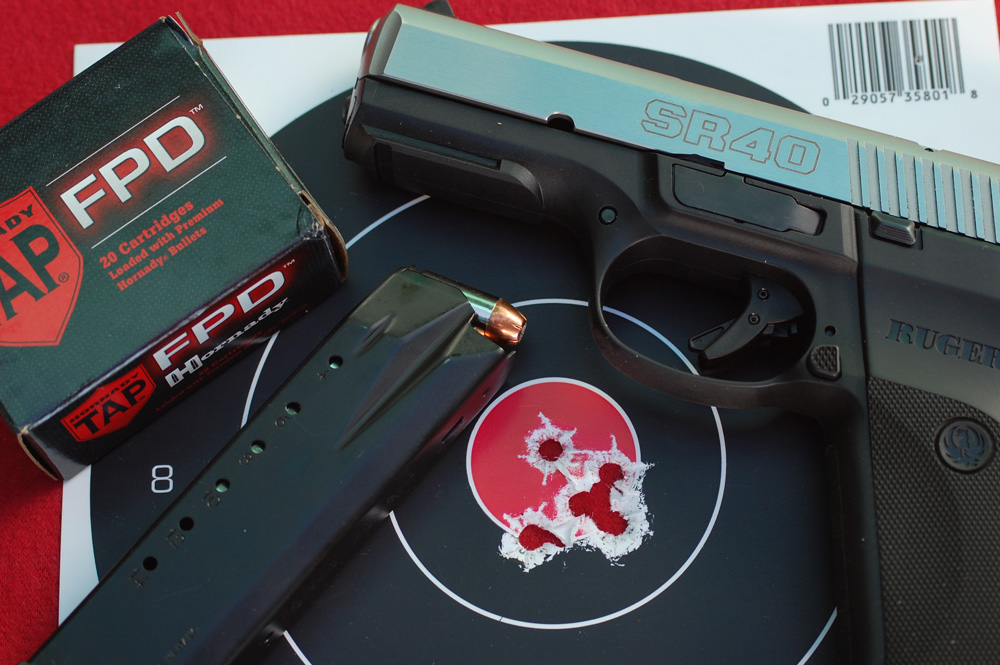
Field striping the pistol for cleaning is a breeze. First, make sure the pistol is unloaded, then lock the slide back and remove the magazine. Push the ejector down and forward—you can’t fieldstrip the pistol unless you do—then remove the takedown pin assembly and, while holding the slide, release the slide stop and ease the slide off the grip frame.
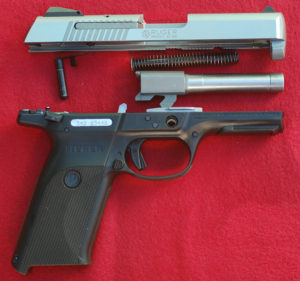
Remove the guide-rod assembly and its spring, then remove the barrel. Reassembly is in reverse order. After the takedown pin is replaced and the slide is still locked back, the ejector then must be pushed up to its original position. This can be done either with your finger or simply by inserting the magazine back in place.
On the test range, the SR40 was accurate and reliable. I tested 13 factory loads and 20 handloads (see the results in the table). Mercifully, there was none of the “first shot out of the group” nonsense so common to many semi-autos. Reliability is absolutely paramount in any defensive pistol, and there was not one failure to feed, fire, or eject with any of hundreds of rounds I tested. Also, it was a lot of fun to shoot. Like Goldilocks said, “It’s not too small or too big, it’s just right.”
Overall accuracy of the SR40 was excellent. With either factory ammo or selected handloads, groups averaged from two to three inches for five shots at 20 yards from a rest; 10 loads handily beat two inches. This is outstanding accuracy for any defensive pistol.
Several loads with new “wonder” bullets offer an optimum combination of penetration and expansion, even through clothing or other barriers—essential for self-defense or law enforcement work—and muzzle energies exceeded 400 ft-bs.
The two mid-weight Hornady 155-grain loads were powerhouses, with the Custom XTP load registering a sizzling 1,152 fps and 457 ft-lbs of muzzle energy, and the TAP/FPD version close behind at 1,098 fps and 415 ft-lbs. The various 180-grain loads clocked about 900 to 980 fps, and the SR40 favored the Hornady 180-grain Custom XTPs and Winchester’s economical USA JHPs.
A bonus with all these rounds was the SR40’s excellent adjustable rear sight, which made switching loads easy. It was tough picking a “best” load, but I finally settled on the Hornady Custom XTP load, because of its excellent accuracy and a crunching 457 ft-lbs of muzzle energy.
I liked the performance of this pistol so much, I broke Gun Writer Rule No. 2*—“Never Buy Test Guns”—and sent Ruger a check. The SR40 is now my regular carry gun around the farm.
Its user-friendly ergonomics, quality construction, excellent accuracy, total reliability, and modest price make it worth a look for anyone considering a self-defense handgun—or just a neat auto pistol for lots of shooting fun.
Ruger SR40 Specifications
Type: Striker-fired, semi-automatic, DAO pistol
Caliber/Gauge: .40 Smith & Wesson
Capacity: 15+1, two 15-round flush-fit magazines provided; 10-round versions available
Barrel length: 4.14 inches, 1:16 right-hand twist six grooves
Weight: 27.2 ounces (with empty magazine)
Overall length: 7.55 inches
Overall width: 1.27 inches
Sights: Fully adjustable three-dot sights
Finish: Brushed stainless steel (tested) or black
nitride alloy steel slide; glass-filled nylon frame
Stocks: Nylon, integral with grip frame
MSRP: $529
Contact: Sturm, Ruger & Co., Inc. (www.ruger.com)
This article is an excerpt from the Gun Digest 2014 annual book.
Get More Ruger Info:
- Great Ruger Guns
- Ruger No. 1
- Ruger Precision Rifle
- Ruger Redhawk
- Ruger Super Redhawk
- Ruger Blackhawk
- Ruger Single Six
- Ruger 10/22
- Ruger LCR
- Ruger LCRx
- Ruger 77/22
- Ruger 77/44
- Ruger SR1911
- Ruger Hawkeye
- Ruger Mark IV
- Ruger SR-556
- Ruger LCP II
- Ruger American Magnum
- Ruger American Rifle
- Ruger Gunsite Scout Rifle
- Ruger SR-762
- Ruger Red Label
- Ruger Single Nine
- Ruger P345
VIDEO: John Lott on Armed Citizens as a Deterrent
Detroit's police chief recently made waves when he advocated people arm themselves for self-defense. In this video, economist John R. Lott, author of More Guns, Less Crime, explains why concealed carry is the most sensible position. Source: CNN Blogs
My recommended resources for concealed carry:
 The Gun Digest Book of Concealed Carry, 2nd Edition
The Gun Digest Book of Concealed Carry, 2nd Edition
The Gun Digest Book of Combat Handgunnery
Armed: The Essential Guide to Concealed Carry
Find more resources at gundigeststore.com/tactical
Prices Keep Rising for Pre-1900 Firearms
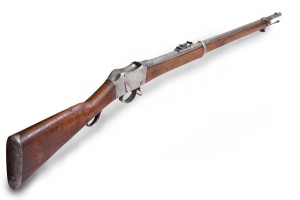
Ron Dickson — Great Eastern National Gun Day and JAG Military Show, Louisville, Ky.
“The collectible firearms market is just wild right now,” says Ron Dickson, manager of National Gun Day gun shows. “For firearms in really good condition, the prices are going through the roof.”
A standard Henry rifle, for example, starts at $20,000 but $35,000 and up is more likely at his shows, attended by many sellers and collectors of antique firearms.
As prices have gone higher for pre-1900 firearms, Dickson says younger, less-affluent collectors are buying up military firearms from World War I and World War II. Lugers and 1911 .45’s from World War II are in big demand, with high quality M1 Garands and M1 carbines still available for under $1,000.
Recommended Resources for Gun Collectors:
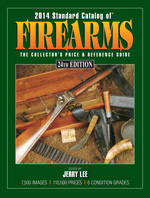 2014 Standard Catalog of Firearms, 24th Edition
2014 Standard Catalog of Firearms, 24th Edition
Magpul Relocating Operations to Texas, Wyoming
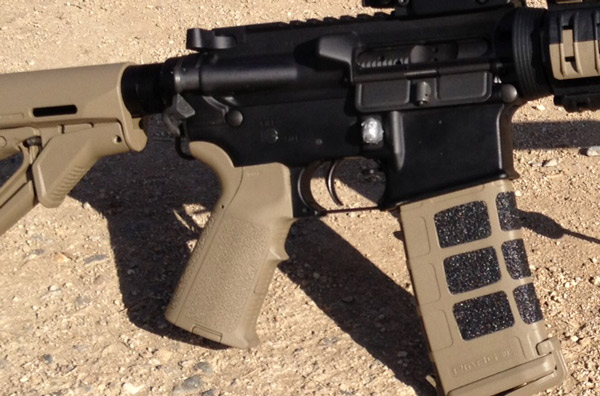
One of the nation’s largest magazine manufacturers announced Jan. 2, it is pulling up stakes from Erie after nearly 15 years in the Northern Colorado town. The company will move its corporate office to Texas and its manufacturing operations to Wyoming.
A rash of gun-control laws passed in Colorado in 2013 was the catalyst for the iconic gun accessories company’s move. One piece of legislation in particular struck at the heart of Magpul’s operations.
Among the new laws enacted included a prohibition on the sale of gun magazines that hold more than 15 rounds. The majority of Magpul’s magazines have capacities of 20 rounds or greater.
The law had language allowing the manufacture of magazines with capacities greater than 15 rounds in Colorado. But Magpul’s heads found little solace in fabricating a product in a state it was deemed illegal to sell.
“Moving operations to states that support our culture of individual liberties and personal responsibility is important,” Magpul CEO Richard Fitzpatrick said in a statement. “This relocation will also improve business operations and logistics as we utilize the strengths of Texas and Wyoming in our expansion.”
Magpul plans on transitioning 92 percent of its workforce outside of Colorado within the next 12-16 months. And it is not the only company set to move from the state due to the gun-control legislation.
Fort Collins’ HiViz Shooting Systems – sights and recoil pads manufacturer – and Littleton-based Ammo Kan have announced they will move to Laramie, Wyo., in 2014.
Recommended Resources
Gun Digest Book of Tactical Weapons Assembly/Disassembly
Tac-Con 3MR Triggers Aiming at Speed, Accuracy
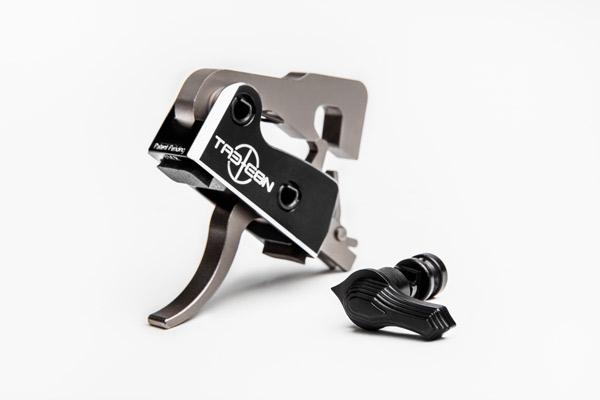
Do you have a need for speed? Tactical Fire Control might have the trigger for you.
The Phoenix, Ariz., manufacturer is now taking pre orders for its much anticipated Tac-Con 3MR Trigger System. And if the drop-in system lives up to its hype, there is a pretty good chance it could be the hot AR product of 2014.
The system consists of safe, semi-automatic and the Tac-Con patented 3rd Mode of operation. It’s the 3rd Mode that makes 3MR special, providing a positive trigger reset, reducing split times between shots.
In short, the trigger resets itself for the next shot, even while there is finger pressure still on it.
According to Tactical Fire Control’s press release, the positive reset “[I]s achieved by transferring the force from the bolt carrier through the trigger assembly to assist the trigger back onto the front sear. As a result, this gives the firearm the fastest reset possible.”
If Tactical Fire Control’s teaser video gives a truthful glimpse of the trigger’s potential, the system is capable of blistering rates of fire. The trigger has a 4.5-pound pull weight in both its semi-automatic and 3rd Mode positions.
Tactical Fire Control has made a point to stress its system is ATF approved and is not a part banned by National Firearm Act. In fact, the company ships the trigger with the ATF approval letter – just incase there are any questions. The company also emphasizes the 3MR is not a bump fire system.
As mentioned before, if the Tac-Con 3MR lives up to what it’s promised it should win accolades and fans. But AR enthusiasts will have to pony up cash to be on the cutting edge.
Presently, the trigger system fetches $495 – nearly twice the amount of many top-end systems. But for those who live to sling large volumes of lead accurately, it might be a small price to pay.
Recommended AR-15 Resources
Gun Digest Book of the AR-15 Series Set! For more resources on guns, shooting and gun collecting check out GunDigestStore.com.
VIDEO: Do You Need Concealed Carry Training?
Rob Pincus finished up the 2013 training year in Arizona, a state where you are not required to have any training before you can carry a defensive firearm. Even so, many firearm owners choose to pay for and attend demanding training courses on their own in order to meet what they perceive as their responsibility. Two of Rob's Advanced Pistol Handling students share their thoughts on the need for concealed carry training in this video.
Learn more from Rob Pincus
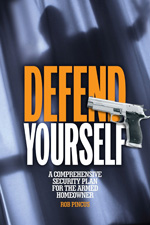 Defend Yourself, a new book by Rob Pincus. Pre-Order Now
Defend Yourself, a new book by Rob Pincus. Pre-Order Now
Weapon RAC, Compromise Between Gun Storage and Convenience

Typically gun storage solutions come in two variations – safes and display cases. While important accessories for any shooter these options usually have one major drawback — accessibility.
Once under lock and key, it takes a good amount of time to put a gun in working order. In a situation where seconds count, the minutes required to retrieve a gun from a safe or case can be costly.
With that in mind, one company has put a functional twist to stowing firearms. BenchMaster's Weapons RAC is a decent attempt to marry storage with convenience. RAC stands for Ready Access Containment, of which the company's sleeves and wall mounts offer in spades.
The sleeves, designed for handguns, are particularly intriguing.
The system comes in one- to four-gun configurations and in two types of storage systems. The shelf sleeves are meant to make closet or gun-safe shelves neat-and-easy storage areas. The larger models also come with extra magazine storage. The mountable one- and two-gun models, on the other hand, aim at more clandestine storage.
The models come with the option of magnetic or Velcro strips, allowing the sleeves to be mounted nearly anywhere. The door of a gun safe can quickly become handgun storage or the side of a bed stand can be mounted with a personal-defense pistol or revolver. It is even conceivable the sleeve could be mounted on the underside of a desk.
Given the light material the Weapon RAC sleeves are made – plastic and foam cushion – where the storage solution is installed is only limited by imagination.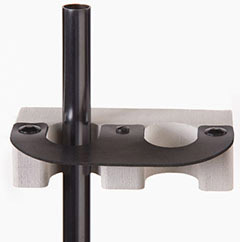
The shotgun and rifle storage options are as simple as can be, little more than cushioned barrel rests with magnetic strips. The configuration makes nearly any metallic surface – such as the side of a gun safe – an extra storage area.
And with the entire RAC line running $12.99 to 39.99, the systems’ prices are all inclusive. BenchMaster’s storage solutions, however, might not be for everyone.
While the Weapon RACs contain guns, they do not secure them. To achieve a fully security, the systems must be used in conjunction with a safe. And the system might not be the first choice for putting a collector's piece in dry dock, since the Weapons RAC offer little overall protection.
However, if a snug storage area that presents a gun for quick retrieval is desired, BenchMaster's system is definitely a consideration.
Recommended Concealed Carry Resources
Find the Weapon RAC interesting? Then it might be time to delve deeper into personal security tactics. There's no better reference on the matter than Defend Yourself: A Comprehensive Security Plan for the Armed Homeowner. The book is perfect if you’ve purchased firearms for home defense and protection, you want practical guidance on home security and defense and you’re looking for practical ways to apply home defense principles. Also check out our other concealed carry books.
VIDEO: Windham Weaponry MPC AR-15 Review
The Windham Weaponry MPC AR-15 is forged in the old Bushmaster Firearms tradition. Now, Windham Weaponry is bringing back the original quality of the best selling AR-15 Rifle in America. The Team Sootch Video Blog reviews this fine AR.
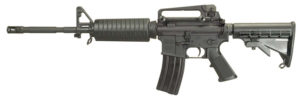 Windham Weaponry “MPC”
Windham Weaponry “MPC”
Model: R16M4A4T
Caliber: .223 Rem. / 5.56mm NATO
Type: Rifle
Action: Semi-Automatic, Gas Impingement System
Capacity: 30 + 1- Ships with one 30 Round Magazine
Safety: Manual Lever with Indicator Markings on Both Sides of Receiver
Receiver: M4A4 Type Flat Top Upper Receiver with Detachable Carry Handle
Receiver Material: Forged 7075 T6 Aircraft Aluminum with Aluminum Trigger Guard
Receiver Finish: Hardcoat Black Anodize Finish
Bolt Material: Carpenter 158 Steel
Barrel: 16” M4 Profile, Chrome Lined with A2 Flash Suppressor
Barrel Material: 4150 Chrome Moly Vanadium 11595E Steel w. M4 Feed Ramps
Rifling: 1 Turn in 9” – Right Hand Twist
Stock: 6 Position Telescoping Buttstock with Windham Weaponry Logo
Forend / Pistol Grip: M4 Double Heat Shield Handguards / A2 Black Plastic Grip
Rear Sight: A4 Dual Aperture Elevation & Windage Adjustable: 300 – 600 M
Front Sight: Adjustable Height Square Post in A2 Standard Base
Packaging: Hard Plastic Gun Case with Black Web Sling & Operators Manual
Learn more at windhamweaponry.com
VIDEO: How to Shoot on the Move
Sooner or later you'll need to leave the safety and comfort of the shooting bench and learn how to shoot while moving. The guys at PFC Training give you some expert tips on runnin' and gunnin' in this video.
Recommended AR-15 resources:
 New! – The Gun Digest Book of the AR-15 Vol. IV
New! – The Gun Digest Book of the AR-15 Vol. IV
The Gun Digest Book of the AR-15 Vol. III
The Gun Digest Book of the AR-15 Vol. II
The Gun Digest Book of the AR-15 Vol. I
Gunsmithing the AR-15, How to Maintain, Repair & Accessorize
New! The Gun Digest Buyer's Guide to Tactical Rifles
Find more gun books, DVDs and downloads at gundigeststore.com.

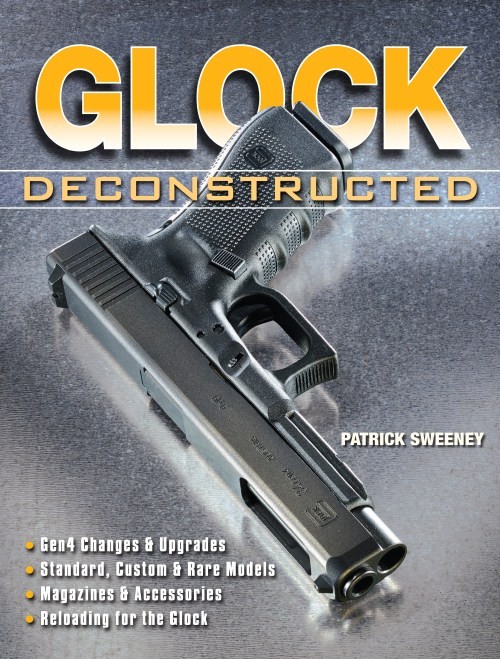
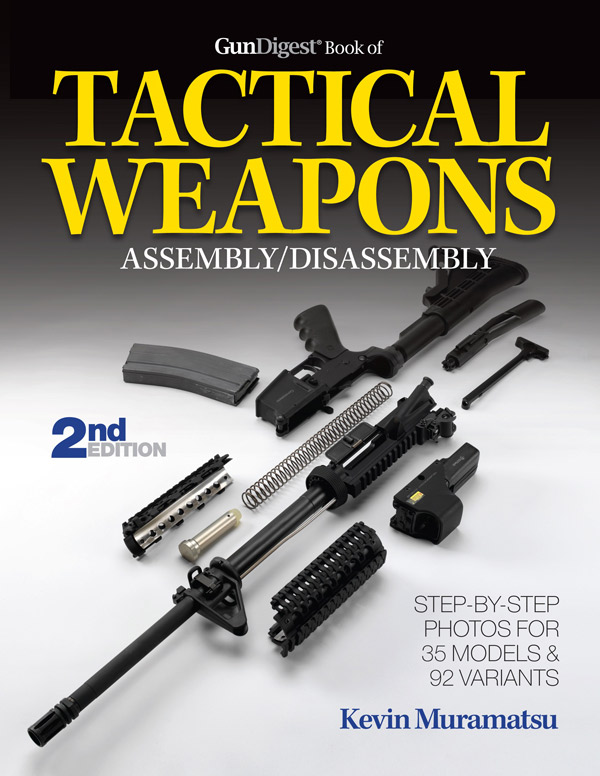

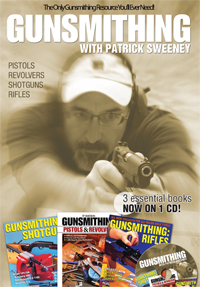


![Best Concealed Carry Guns In 2025 [Field Tested] Wilson Combat EDC X9S 1](https://gundigest.com/wp-content/uploads/Wilson-Combat-EDC-X9S-1-324x160.jpg)


![Best 9mm Carbine: Affordable PCCs [Tested] Ruger Carbine Shooting](https://gundigest.com/wp-content/uploads/Ruger-Carbine-Shooting-100x70.jpg)
![Best AR-15: Top Options Available Today [Field Tested] Harrington and Richardson PSA XM177E2 feature](https://gundigest.com/wp-content/uploads/Harrington-and-Richardson-PSA-XM177E2-feature-100x70.jpg)
